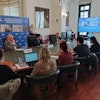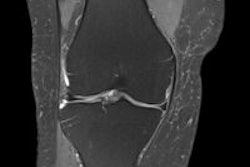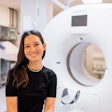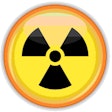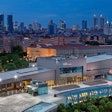
Radiologists are constantly interrupted during their normal daily workflow in the reading room, which could have significant implications for patient care, according to a study presented at this year's RSNA meeting.
Research conducted at the University of California, San Francisco (UCSF) in California found that on-call radiologists were interrupted during image interpretation as often as every three minutes during busy periods.
Radiologists face a lot of competing demands over the course of the imaging chain, including telephone consultations, answering questions from technologists or sonographers, and discussing study results, said presenter Dr. Akash Kansagra, now at Mallinckrodt Institute of Radiology.
"We've all experienced this in the reading room," he said. "There are a lot of people who need help."
This environment essentially guarantees that radiologists are subject to frequent disruptions in the reading room, leading to a disorganized workflow, Kansagra said.
In other areas of medicine, it's been recognized that disruptions and disorganized workflow can easily lead to errors. As a result, safeguards have been implemented, such as timeouts in the operating room, dedicated time for nurses to discuss patient care during ward transfers, and physician-to-physician sign-outs, he said.
In radiology, however, there are no reading safeguards in place to protect the specialty's complex workflow. That's particularly problematic because "image interpretation is a very cognitively demanding task -- exactly the kind of thing that is highly susceptible to errors in the setting of frequent disruption," Kansagra said.
Seeking to quantify the extent of the problem, the researchers began by recognizing that many -- though not all -- competing tasks for radiologists involve telephone communication. As a result, they gathered and analyzed an annotated list of telephone encounters in the on-call residents reading room over 90 consecutive days in 2012.
During that period, 10,378 telephone calls were completed during on-call hours. Of these, 55% were incoming calls. The median call length -- including incoming and outgoing calls as well as calls made to send pages -- was only one minute. However, a typical 12-hour overnight on-call shift experienced an average of 72 calls, with an average time of 108 minutes (15%) spent on the phone.
When the researchers delved deeper into the data and analyzed the findings by specific hours, they found, unsurprisingly, that busy times for the hospital resulted in higher phone call volumes.
"When the hospital is busy and when the CT scanner is going, that's at the same time your phone is ringing off the hook," Kansagra said. "The mean percentage of each hour that a resident on call can expect to spend on the phone can be as low as 5% at 7 in the morning ... to as high as 25% right at the end of the workday."
During the busiest of times, residents had as little as three minutes in between phone calls to read studies. Further analysis showed that if a study took less than 10 minutes to interpret, there was a 37% probability that the resident would be interrupted at least once by an incoming call. For studies that required 10 minutes to read, the probability increased to 59%.
The data demonstrate "disruption of the radiologist's workflow on a massive scale," Kansagra said. "Depending on the hour, phone calls can occur as frequently as one every three minutes. This doesn't include other sources of disruption -- in-person consultations, what have you -- that are not accounted for in telephone data."
Radiologists tolerate these disruptions, partly because their workflows are complex and difficult to standardize fully.
However, "learning from other specialties, it's not a big leap to assume that reducing distractions is likely to improve cognitively demanding tasks like image interpretation," he said.
Approaches such as asynchronous communication and standardizing some other portions of radiologist workflow are being explored to see if they can improve this dynamic, according to Kansagra.
"We've implemented some of those at [UCSF] with some positive effect," he said.



